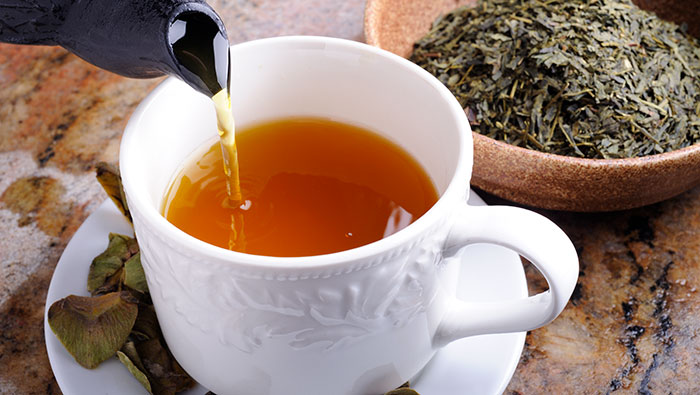
Tea is more than just leaves and water. Dating back centuries, tea is one of the most versatile beverages, with many varieties said to have health benefits. Katharine P. Burnett, associate professor of art history, directs the UC Davis Global Tea Initiative, founded in 2015 to synthesize interdisciplinary global research on tea and draw together researchers in the field. Here, she shared more about the popular drink.
Ancient History
Burnett, former director of East Asian studies, said that according to Chinese legend, tea was discovered around 2800 BCE. “It was a medicine, then a soup ingredient, then a beverage,” said Burnett. “Buddhist monks drank it to stay awake during meditation.” Tea’s reach expanded to Western Europe in the 17th century when maritime trade spread and European nations cemented economic relationships with China.
SE Asia Connection
Burnett is currently studying Southeast Asian tea cultures. “Because tea grows indigenously from southwest China across Southeast Asia to northeast India, it is reasonable to suppose that these areas developed their own tea cultures,” she said.
Taste Test
Flavor profiles are affected by where tea is grown. Burnett likened tea to wine: “A green tea in China tastes different from a green tea in Japan. But they all have virtues. Like wine — sometimes you want a Cabernet Sauvignon from Australia instead of the U.S., and sometimes you want a black tea from Sri Lanka instead of India.”
Keep Calm
Theanine, found in tea, is an amino acid that is said to have a relaxing effect. “Even though tea has caffeine, it also has this calming component that almost nothing else has,” said Burnett.
Brew a Great Cup of Tea
1. Start with good quality water. “If you have a lousy water supply, you cannot make a good cup of tea,” Burnett said.
2. Use loose-leaf tea, located in teashops and many supermarkets.
3. Monitor the water temperature. Depending on your tea leaf, said Burnett, the water temperature for optimal taste changes.
- Green tea: 175°F
- White tea: 185°F
- Oolong tea: 190°F
- Black tea: 212°F
4. Check your steeping time. Burnett recommended tasting the tea every 30 seconds to achieve your preferred taste. Then, she said, “Pour the liquid — called liquor — off the leaves, into another pot if you have a large quantity, and into a cup from there.”